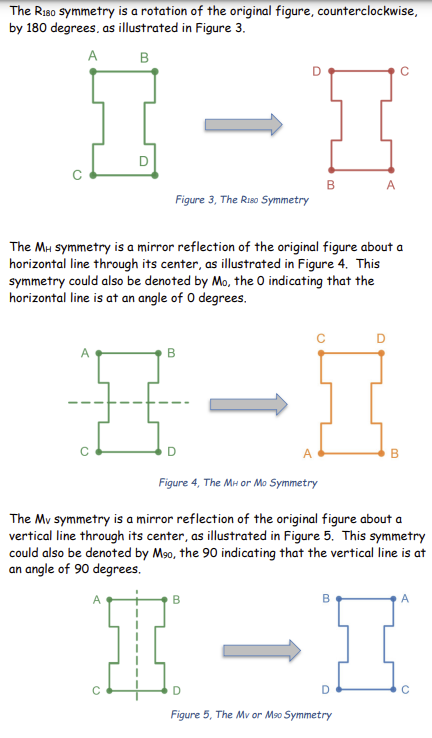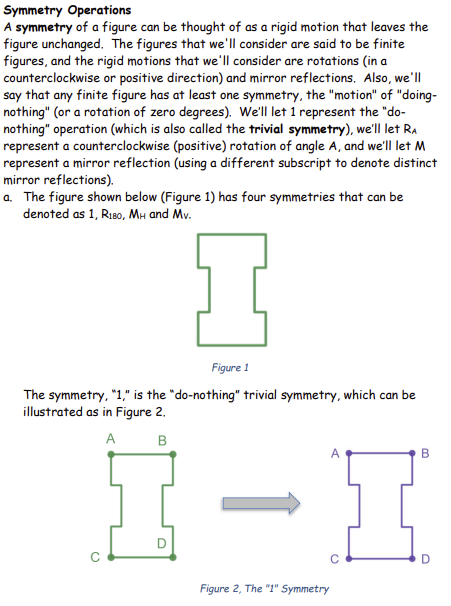equivalent to symmetry MV applied to the original figure (Figure 5), so we can express the final result as R180 ° MH = MV. Complete the following Cayley table: ° Apply First Apply Second ° 1 R180 MH MV 1 R180 MV MH MV The symmetries will be denoted by S, i.e., S = {1, R180, MH, MV}. ii. Explain why the system (S, °) is closed. iii. Provide at least three examples that can be used to conjecture that the system (S, °) is associative. iv. Identify the identity element for the system (S, °). v. For each element in S, specify
The operation between two symmetries can be thought of as a composition,with the result of the first symmetry being the starting point for thesecond symmetry. The composition symbol, °, will denote the operation between two symmetries. For example, the operation R180 ° MH would mean that, starting from the rightmost operation, the symmetry MH would be applied to the original figure first, with the result then being followed by R180, a counterclockwise rotation by 180 degrees.
The result of the composition is equivalent to symmetry MV applied to the original figure (Figure 5), so we can express the final result as R180 ° MH = MV.
Complete the following Cayley table:
| ° | Apply First | ||||
| Apply Second | ° | 1 | R180 | MH | MV |
| 1 | |||||
| R180 | MV | ||||
| MH | |||||
| MV |
The symmetries will be denoted by S, i.e., S = {1, R180, MH, MV}.
ii. Explain why the system (S, °) is closed.
iii. Provide at least three examples that can be used to conjecture that the system (S, °) is associative.
iv. Identify the identity element for the system (S, °).
v. For each element in S, specify their inverse element. Completing tasks (ii), (iii), (iv) and (v) indicate that the system (S, °) is a group.
vi. Determine if the group (S, °) is commutative.


Step by step
Solved in 6 steps with 5 images






